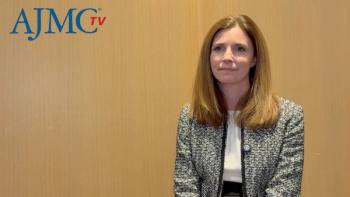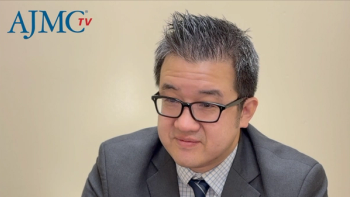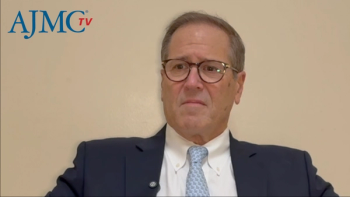
The Potential of Drug Repurposing for Inherited Dermatologic Diseases: Cory Simpson, MD, PhD
Cory Simpson, MD, PhD, assistant professor of dermatology at the University of Washington, spoke to the need for more treatment options in genetic skin conditions and the possibility of drug repurposing.
Cory Simpson, MD, PhD, assistant professor of dermatology at the University of Washington, spoke to the need for more treatment options in genetic skin conditions and how drug repurposing may be one way to achieve this.
This transcript has been lightly edited for clarity; captions were auto-generated.
Transcript
Can you discuss the existing gaps in treatment options for rare genetic diseases compared with inflammatory skin disorders?
This has been a really exciting time to practice dermatology, where there's been an explosion of new therapies that are actually molecularly sensible. They make sense for the disease. We've found targeted therapies, so everything isn't treated with steroids anymore, which is great. We have a lot of targeted therapies, but most of them have been directed towards more common inflammatory diseases—eczema, psoriasis, and hidradenitis suppurativa is now coming on the horizon with new therapies.
But for the really rare disorders, genetic disorders, we haven't seen as much advance. For dystrophic forms of EB [epidermolysis bullosa], there have actually been a couple of approved therapies in the last few years, which has been really exciting. But the way those therapies are tested and what they're designed for may not work for a different form of epidermolysis bullosa—the type that we work on, EB simplex. So that's what we're trying to come in and say, "Well, this rare population also needs a therapy, so let's work to find something for them."
That's where we get into the idea of drug repurposing. We do have a lot of drugs that are out there now approved, even in pediatric patients, that are shown to be safe and effective for some other disease. Can we borrow that and say, "There's a shared pathway between atopic dermatitis and this blistering disease. Could we actually use that to treat the disease?" Or there are people like [Amy Paller, MD], for instance, who's trying to repurpose things that might treat the symptoms of some of these diseases. If you know something like duplumab is known to treat the itch of atopic dermatitis, could that be reused? Maybe not to cure epidermolysis bullosa, but to actually treat some of the life-changing symptoms that patients experience by sort of repurposing that drug?
Where might there be opportunities to repurpose existing FDA-approved therapies to treat genetic skin disorders?
We have a lot of different medications that could potentially be reused for a different disorder. What we have to really look at then is, what do they target, and is that target shared in some of these rare disorders? We now have this ability to do more broad screening. We have a model of a disease, and we can get all of this RNA sequencing data, like I was explaining, where you get sort of a broader signature of what's going on in the cell to make it not function properly. Do any of those signals that cause disease match anything that we already have?
A lot of the trials now are what I would call sort of "forced repurposing," where it's, "Well, we have this hammer, so can't we make this into a nail?" But the thing is, let's find out more about the nail so we know which hammer to use. That's where the tool has to really match the treatment. And that's really what we're trying to do with basic lab research: to find what the tools are that we actually need and if those already exist, rather than starting from scratch. In a phase 1, can we borrow a tool that works for a different disease, bring it over to a rare disease community, and really make a difference for those patients?
Newsletter
Stay ahead of policy, cost, and value—subscribe to AJMC for expert insights at the intersection of clinical care and health economics.







































